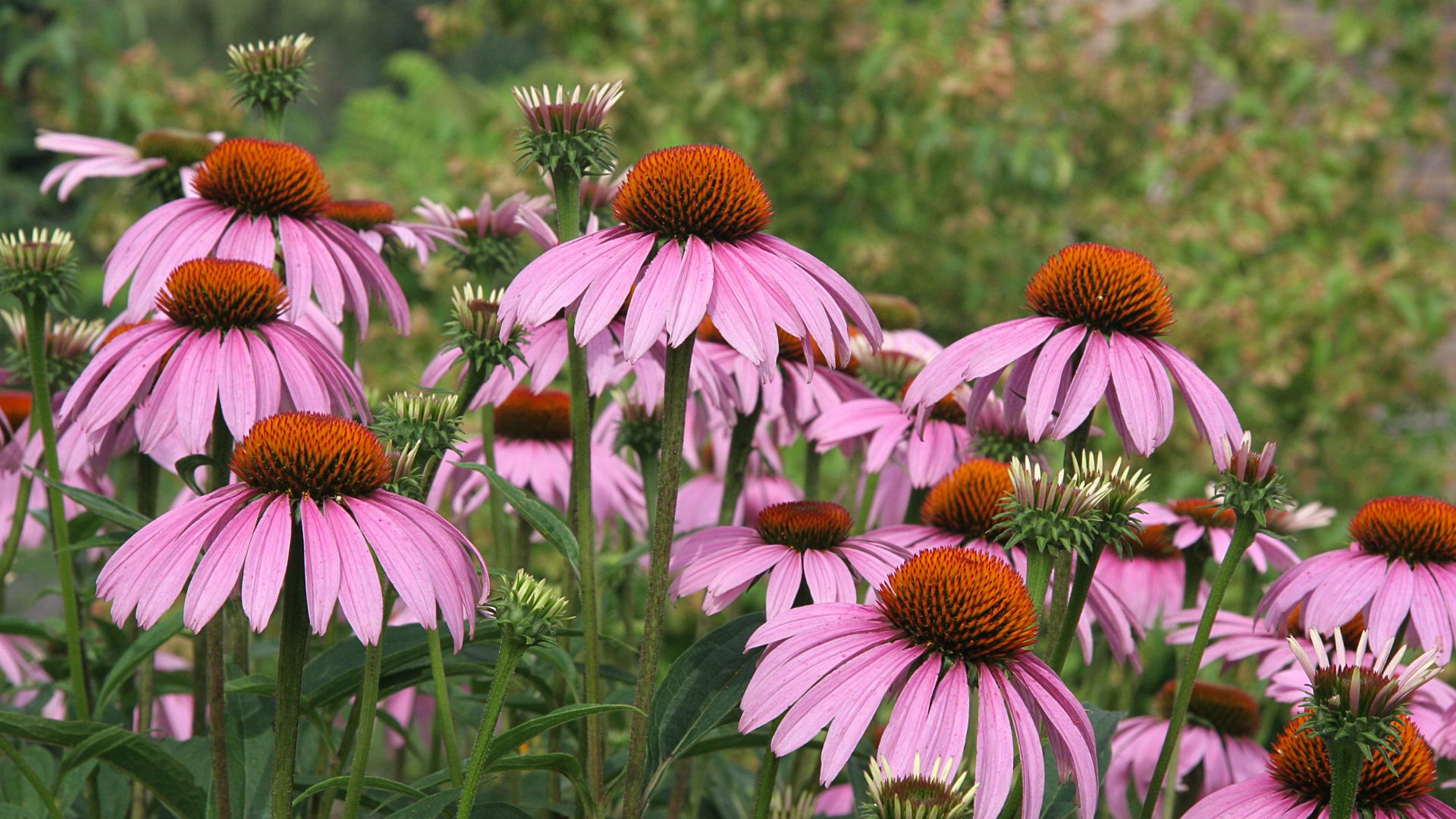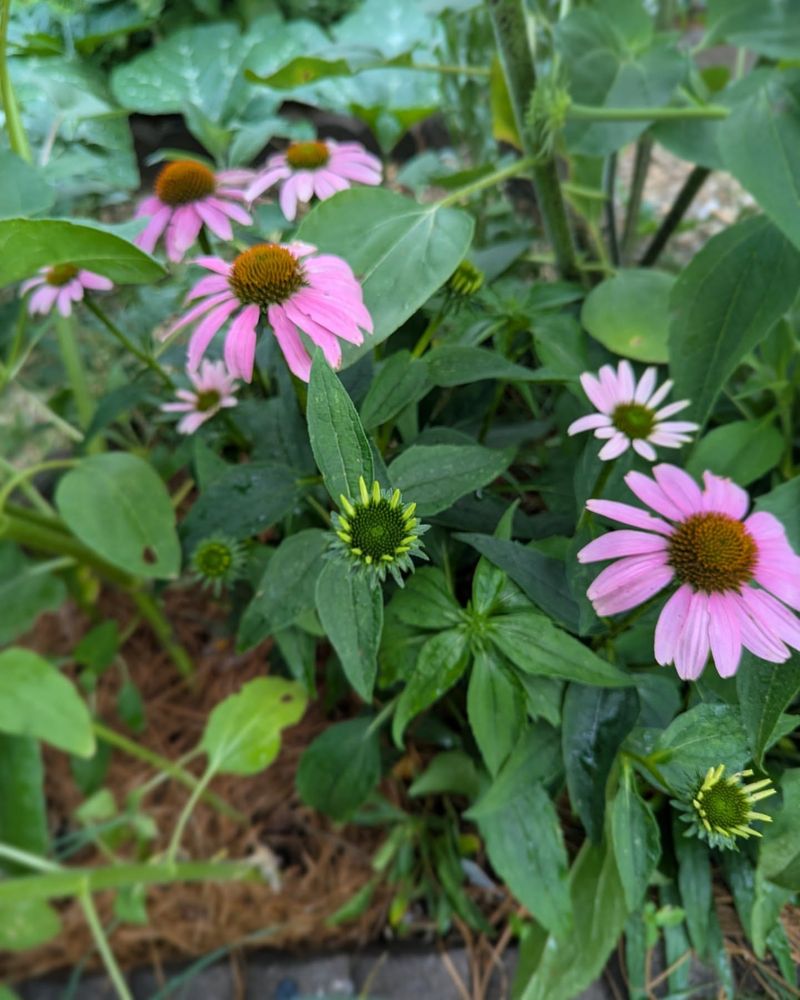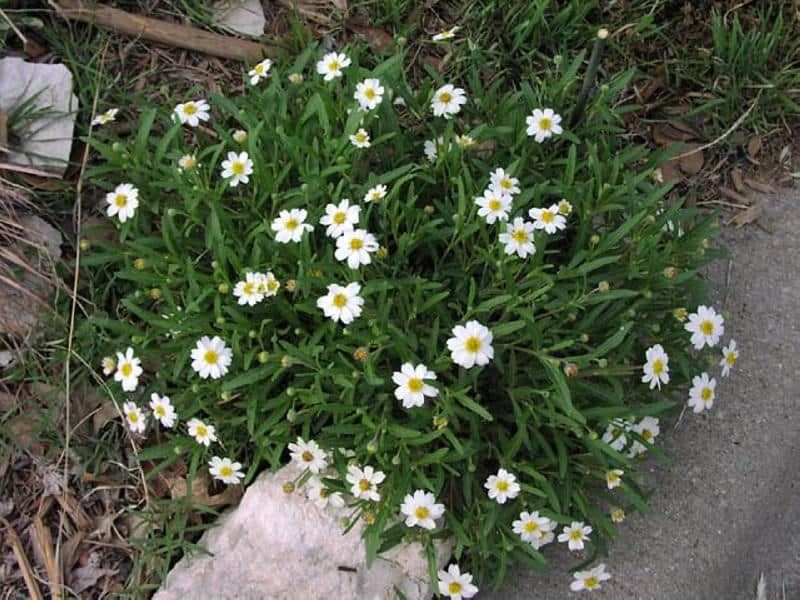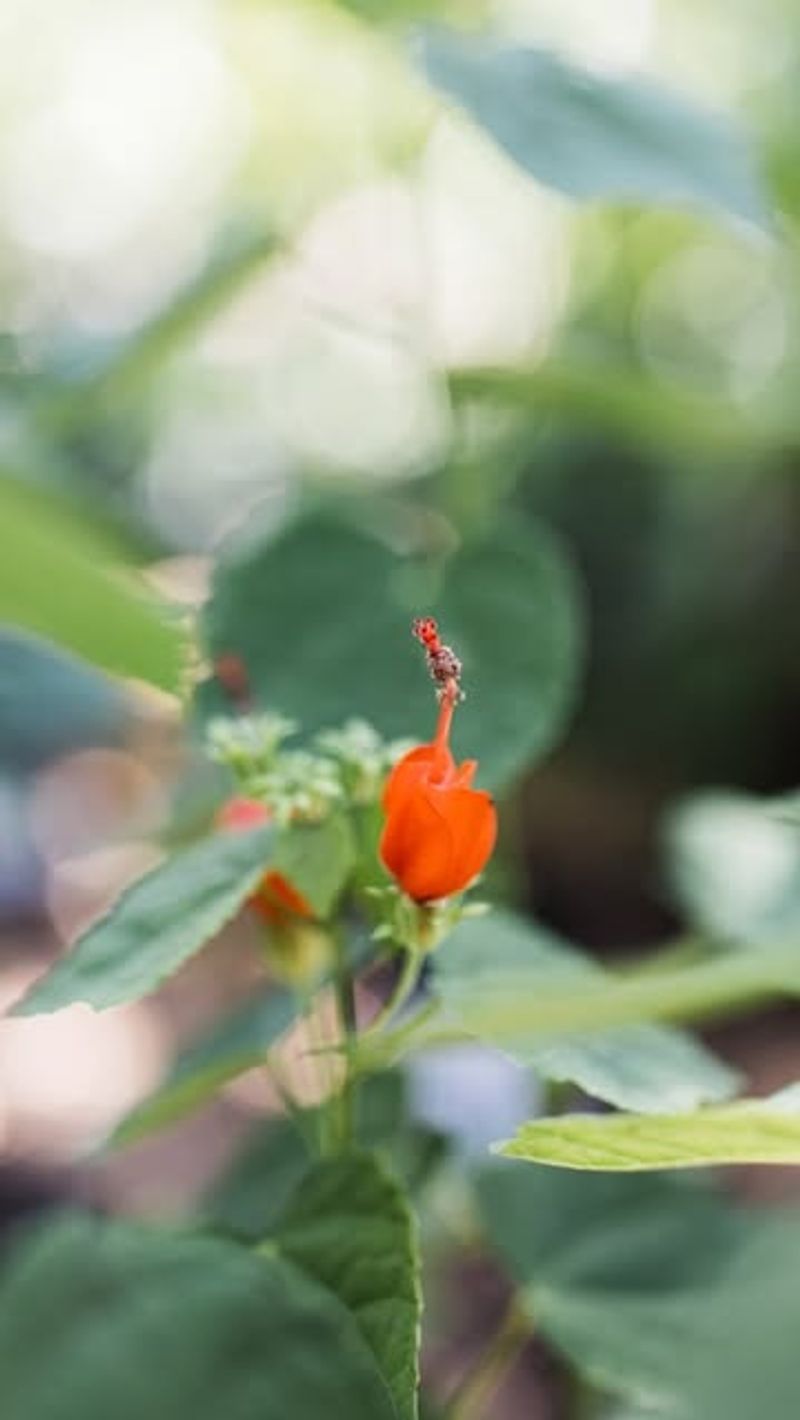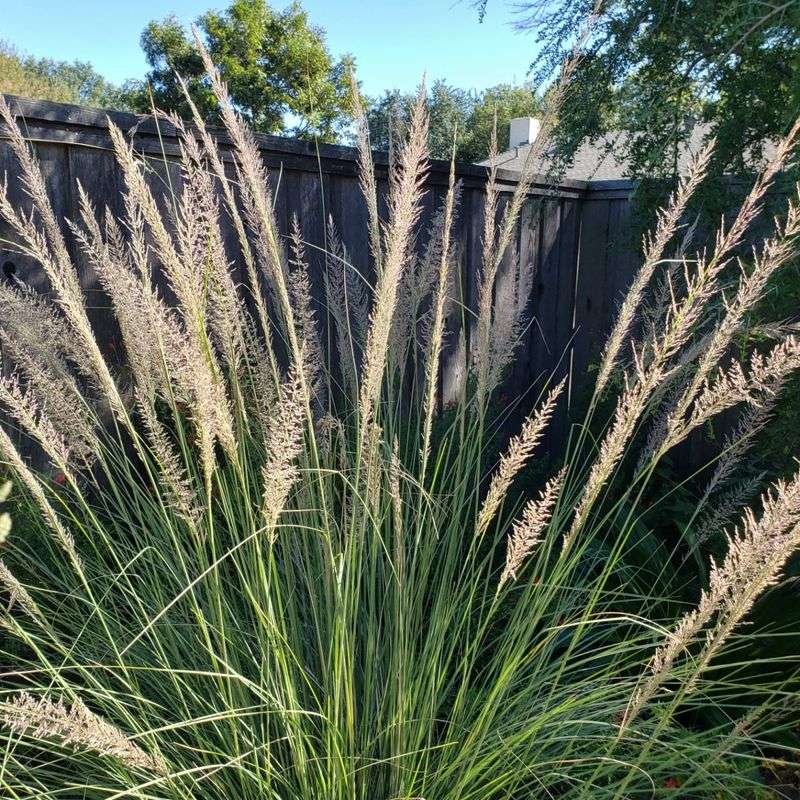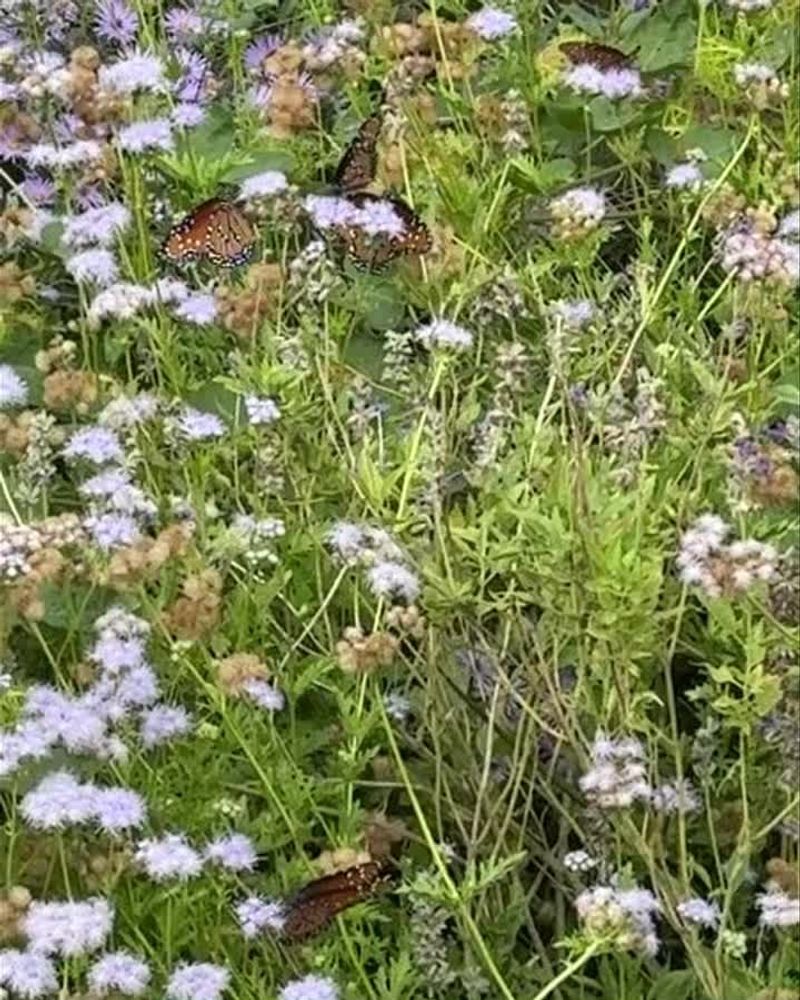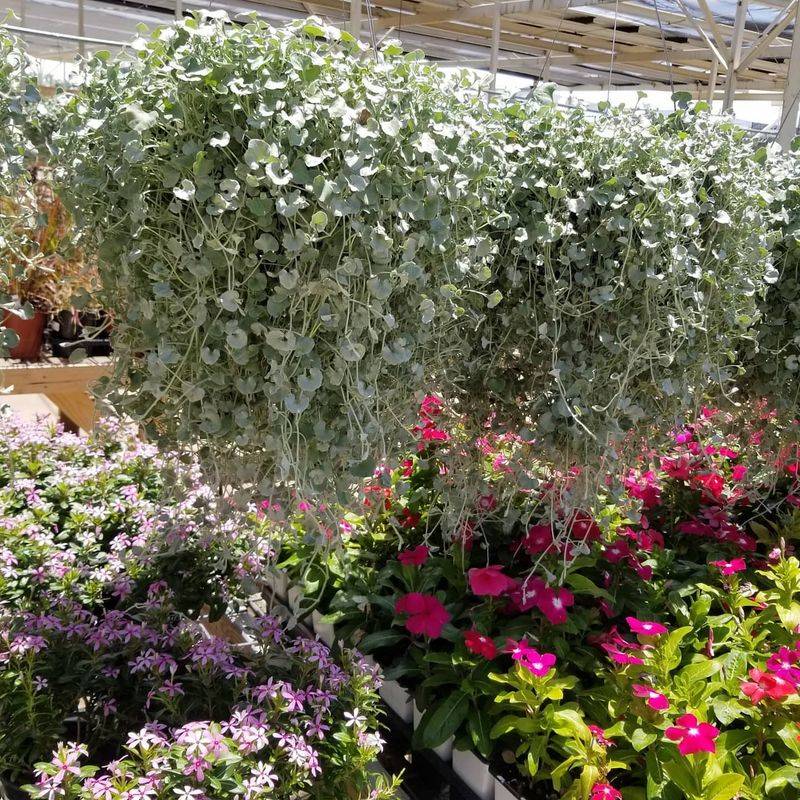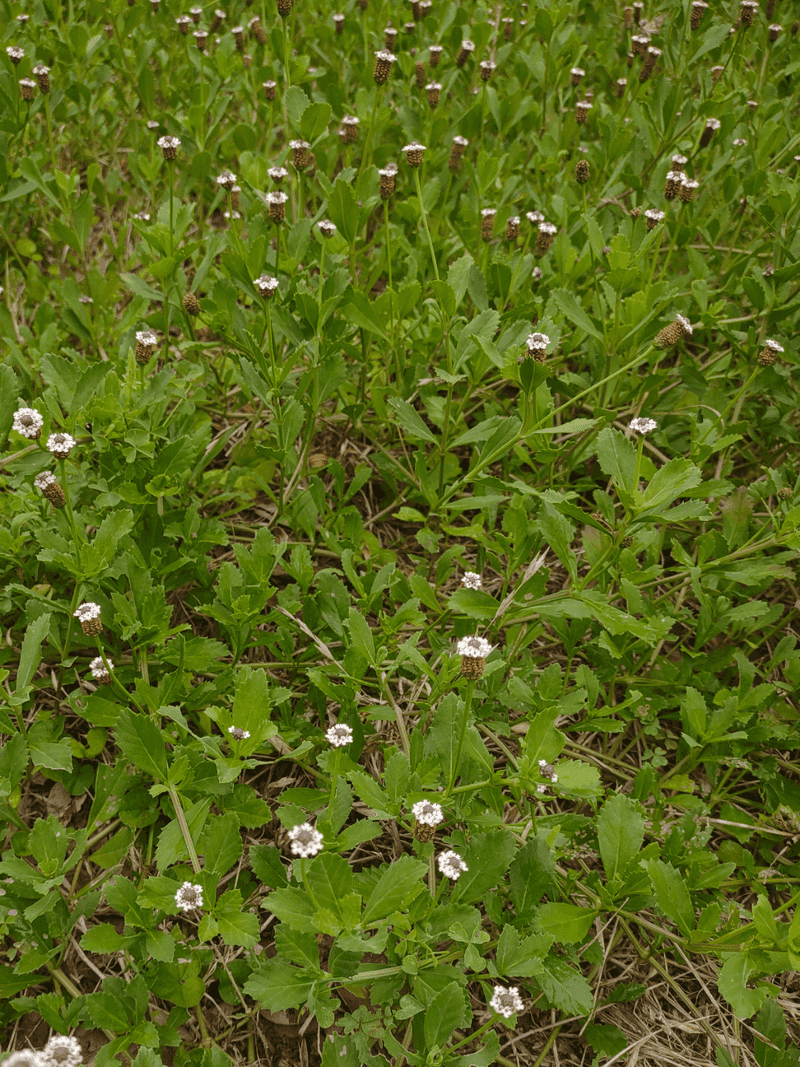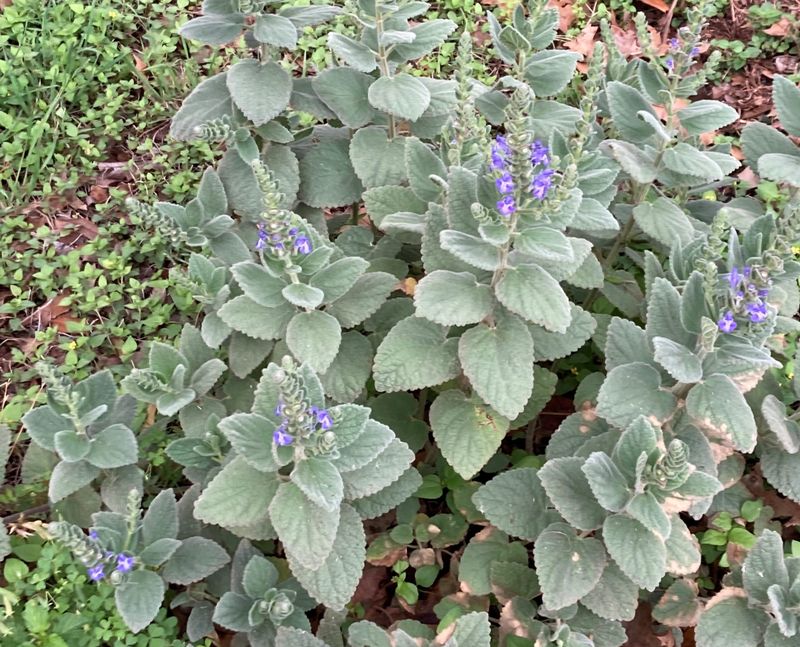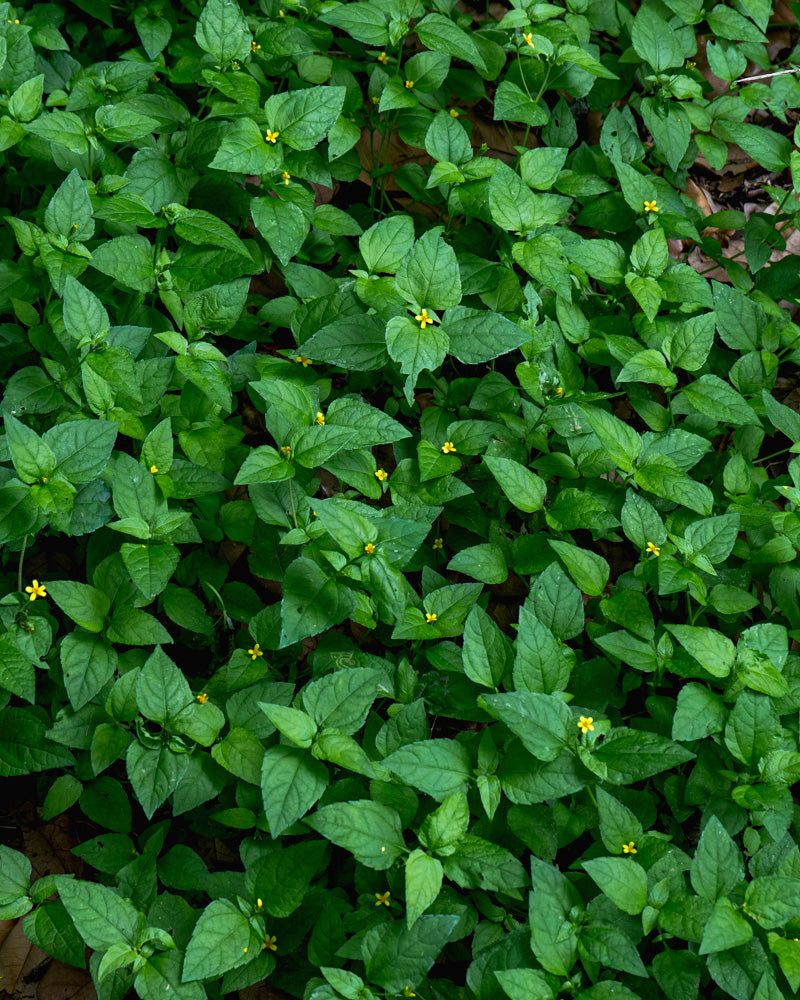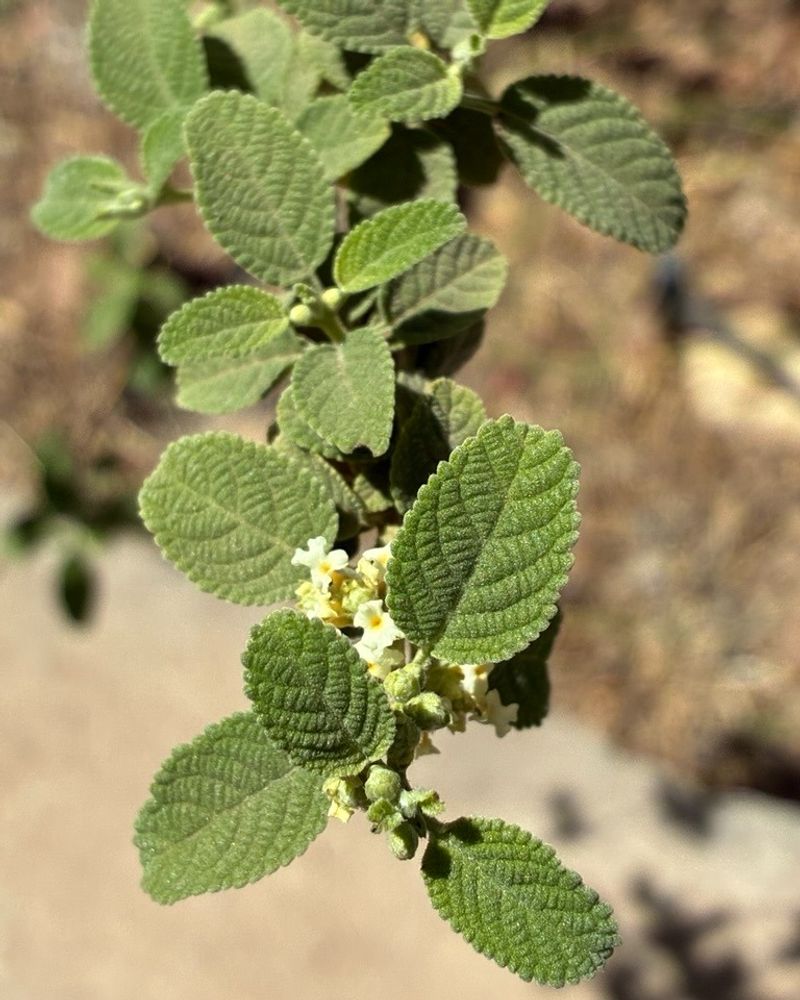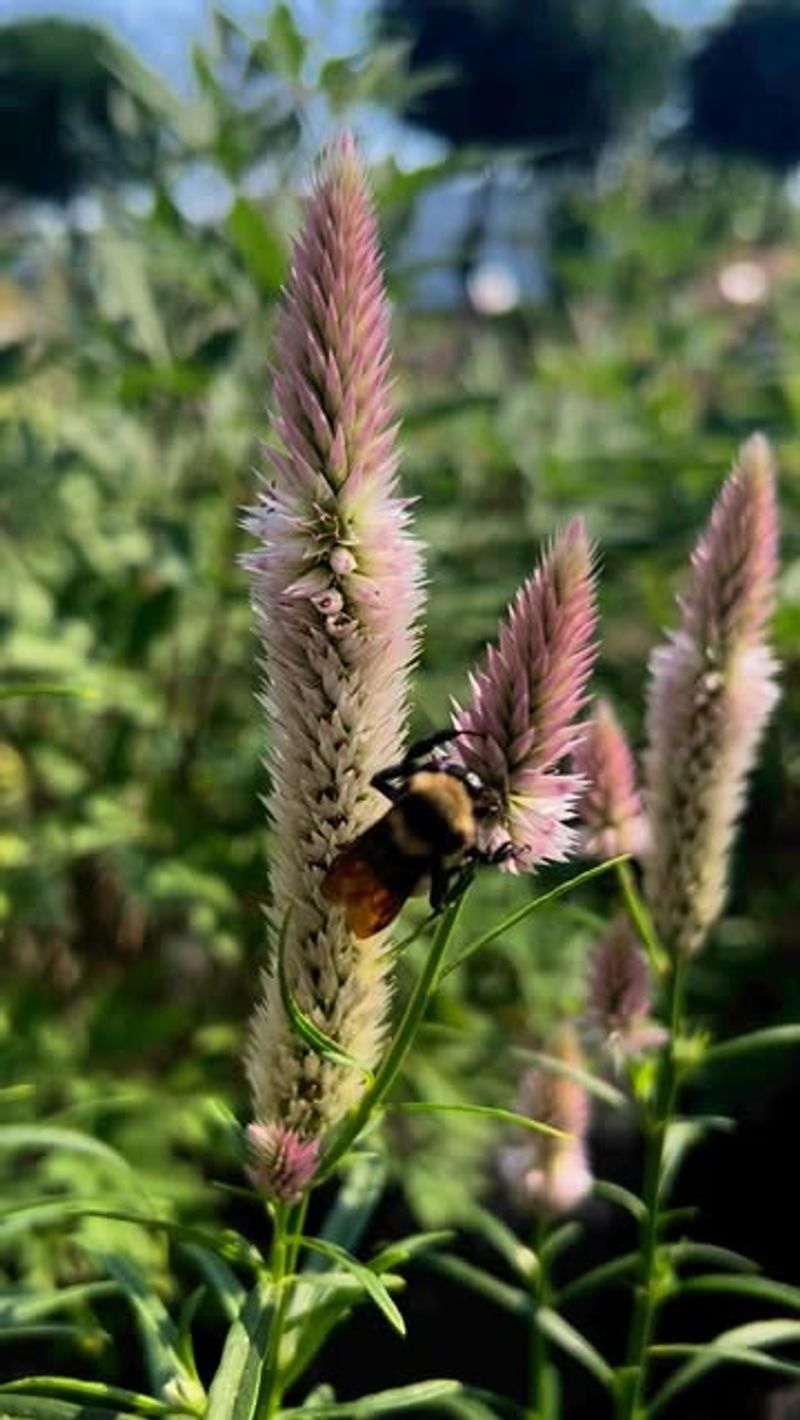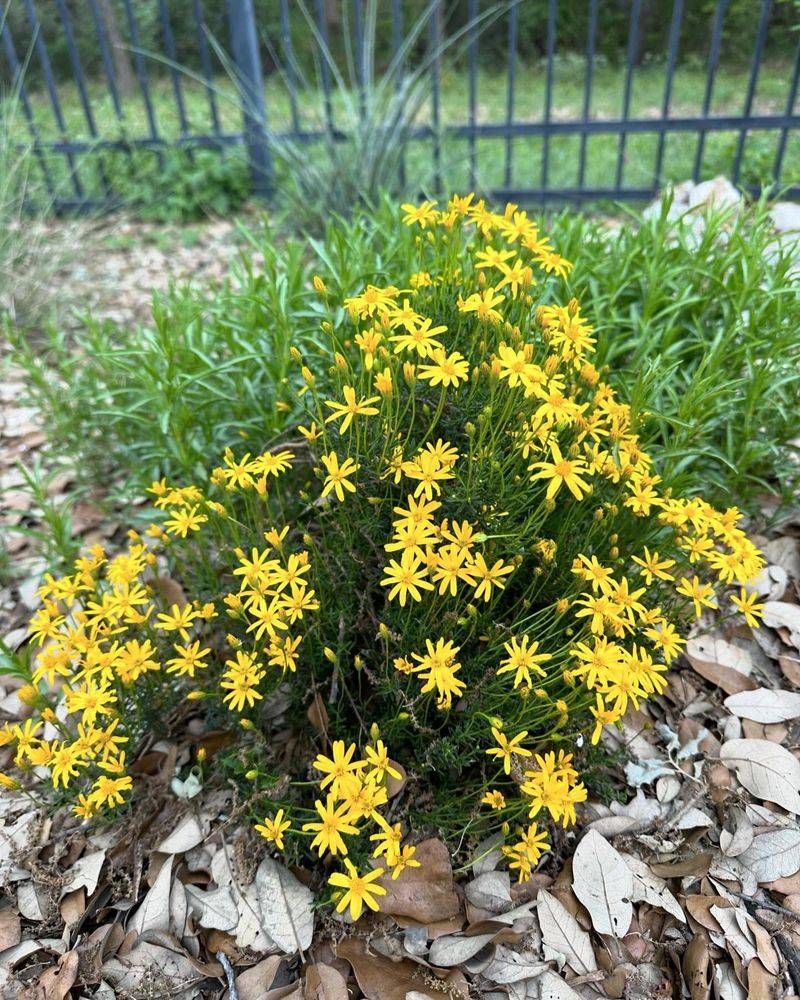Weeding in Texas feels like a full-time job, thanks to finicky soil and unpredictable weather. But seasoned gardeners know that tough, beautiful perennials can do more than survive—they can smother weeds before they get a chance.
After testing countless plants across Texas’s diverse climates, a few stand out every time. These 19 weed-fighting perennials don’t just look good—they form thick, resilient growth that leaves no room for unwelcome guests.
Whether you’re gardening in the Hill Country or along the Gulf Coast, these selections thrive all season long. With the right plants in place, you’ll spend less time pulling and more time enjoying your garden.
1. Purple Coneflower (Echinacea purpurea)
Growing in dense clumps, these native wildflowers create a natural barrier against invading weeds. Their spreading root system fills the soil space that weeds typically exploit.
The distinctive purple blooms attract butterflies and bees from spring through fall, making your garden buzz with life. In my Austin garden, they’ve thrived for years with almost no maintenance.
Once established, they’re incredibly drought-tolerant, perfect for our scorching Texas summers. Plant them 18 inches apart, and within two seasons, they’ll form a solid, weed-resistant mat.
2. Mexican Feather Grass (Nassella tenuissima)
Feathery plumes wave gracefully in the slightest breeze, creating a mesmerizing display while developing a thick root system that chokes out weeds. This grass spreads just enough to fill spaces without becoming invasive.
Dry conditions don’t faze this tough native. I’ve watched it thrive in my San Antonio yard through months without rain, maintaining its weed-suppressing abilities even when other plants struggle.
Mass plantings create the best weed barrier effect. The dense roots form a tight network underground, while the arching stems shade the soil surface, preventing weed seeds from germinating.
3. Blackfoot Daisy (Melampodium leucanthum)
Low-growing and naturally spreading, these tough little daisies form tight mats that weeds simply can’t penetrate. Their white blooms appear continuously from spring through fall.
Hardy in the toughest conditions, they’ve survived everything from Hill Country limestone to Houston clay in my gardening experiences. The dense foliage creates a living mulch that naturally suppresses weed growth.
Planting them along borders or in rock gardens maximizes their weed-fighting abilities. They rarely grow taller than 12 inches but spread up to 24 inches wide, creating excellent ground coverage with minimal effort.
4. Lamb’s Ear (Stachys byzantina)
Soft, velvety leaves spread quickly to form dense mats that leave no room for weeds to gain a foothold. The fuzzy texture isn’t just pleasant to touch—it’s nature’s perfect weed barrier.
Surviving both North Texas freezes and Gulf Coast humidity makes this plant remarkably versatile. I’ve watched mine bounce back after everything from ice storms to 100-degree heat waves.
The silvery foliage creates beautiful contrast in flower beds while performing the practical job of crowding out weeds. Even in partial shade where many ground covers struggle, lamb’s ear maintains its dense growth pattern.
5. Autumn Sage (Salvia greggii)
Rapidly forming woody stems and dense foliage, this Texas native creates shade that prevents weed seeds from germinating. Multiple plants placed about two feet apart will quickly grow together into a weed-resistant hedge.
Flowering nearly year-round in many parts of Texas provides constant color while maintaining its weed-suppressing abilities. Hummingbirds visit mine constantly, adding wildlife value to its practical benefits.
Drought tolerance means it stays lush and full even during water restrictions. After five years in my Hill Country garden, my autumn sage plants have created nearly impenetrable root systems that leave no room for weeds.
6. Turk’s Cap (Malvaviscus arboreus)
Forming a dense thicket of stems and large leaves, this native shade-lover creates a natural canopy that blocks light from reaching potential weeds. In my Dallas backyard, it’s transformed a once-weedy corner into a maintenance-free zone.
Thriving in those tricky spots where sun and shade mix throughout the day, it’s perfect for woodland garden edges. The unusual red flowers look like twisted turbans, adding unique visual interest.
Unlike many shade plants that grow sparsely, Turk’s Cap fills in completely, creating a solid mass of foliage. Its spreading habit means one plant can eventually cover 4-5 feet, smothering any weeds that try to emerge.
7. Trailing Lantana (Lantana montevidensis)
Cascading stems spread rapidly to create a colorful carpet that smothers weeds before they can establish. Unlike its upright cousins, this lantana hugs the ground, making it perfect for slopes and garden edges.
Heat only makes it grow more vigorously—a true Texas tough plant. During last summer’s record temperatures, mine actually expanded while neighboring plants struggled, taking over spaces where weeds might have appeared.
Purple blooms attract butterflies from spring through fall, adding movement and life to the garden. The dense network of stems creates a living mulch that effectively blocks weed growth while requiring almost no maintenance.
8. Big Muhly (Muhlenbergia lindheimeri)
Forming massive clumps up to four feet wide, this native grass creates islands of weed-free territory in any garden. The dense root system competes aggressively for soil resources, leaving little for opportunistic weeds.
Silver-blue foliage adds year-round structure and color to the landscape. In my Hill Country garden, these grasses maintain their weed-suppressing abilities even during winter dormancy.
Fall brings spectacular pinkish-silver plumes that dance above the foliage. Several plants spaced about three feet apart will eventually grow together, creating a stunning, low-maintenance, weed-resistant border that needs almost no attention once established.
9. Gregg’s Mistflower (Conoclinium greggii)
Spreading rapidly through underground runners, this native creates a solid mass of foliage that weeds can’t penetrate. In fall, clouds of blue flowers attract dozens of butterfly species, turning your garden into a nature sanctuary.
Moderate water needs make it perfect for those in-between garden spots—neither wet nor dry. Mine has thrived in clay soil that many other plants reject, creating a weed-free zone for years.
The dense growth habit provides excellent soil coverage, blocking light that weed seeds need to germinate. Plant it where it has room to spread, as one plant can eventually cover several square feet with its weed-suppressing growth.
10. Silver Ponyfoot (Dichondra argentea)
Tiny silver leaves create a stunning ground-hugging carpet that fills in rapidly, leaving no bare soil for weeds to exploit. The reflective quality of the foliage adds a beautiful dimension to gardens while performing valuable weed-prevention work.
Spilling over walls or between stepping stones, it creates both beauty and function. In my Austin garden, it’s eliminated weeding entirely in areas where it’s established, saving countless hours of maintenance.
Despite its delicate appearance, this plant handles Texas heat with remarkable resilience. The dense mat of foliage shades the soil completely, preventing weed seeds from receiving the light they need to germinate.
11. Henry Duelberg Sage (Salvia farinacea ‘Henry Duelberg’)
Discovered in a Texas cemetery, this tough salvia forms dense clumps that expand yearly, crowding out weeds with its vigorous growth. The deep blue flower spikes attract pollinators from spring through fall.
Handling both drought and occasional flooding makes it unusually adaptable. When other plants in my Houston garden struggled after heavy rains, Henry Duelberg maintained its weed-suppressing density without missing a beat.
Multiple plants will eventually grow together to form a solid mass about 3 feet tall and wide. The resulting canopy of foliage creates deep shade at soil level, preventing weed seeds from germinating and establishing.
12. Woolly Stemodia (Stemodia lanata)
Silvery-gray foliage spreads quickly to create a dense carpet only 3-4 inches tall. The fuzzy texture isn’t just visually interesting—it creates a physical barrier that prevents weed seeds from reaching the soil beneath.
Thriving in the hottest, driest spots makes this plant perfect for those challenging areas where weeds typically gain a foothold. My rock garden went from weed-prone to virtually maintenance-free after adding this tough ground cover.
Small lavender flowers appear occasionally but the main attraction is the year-round foliage. Its low water needs mean it maintains its weed-suppressing density even during drought restrictions when other plants might thin out.
13. Frogfruit (Phyla nodiflora)
Creating a tight mat of foliage only 2-3 inches tall, this native ground cover spreads rapidly to fill bare areas where weeds might otherwise take hold. Small white flowers attract tiny pollinators throughout the warm months.
Tough enough to handle foot traffic, it’s perfect for pathways and between stepping stones. In my San Antonio yard, it’s replaced what was once a weedy side yard with a uniform, low-maintenance carpet.
Adapting to both sun and shade gives it versatility that few weed-suppressing plants can match. It stays evergreen in mild Texas winters, maintaining its weed control even during the dormant season when many other ground covers retreat.
14. Heartleaf Skullcap (Scutellaria ovata)
Heart-shaped leaves emerge in spring, quickly forming a dense carpet that smothers emerging weeds. By summer, the foliage creates complete soil coverage in shady areas where many ground covers struggle.
Blue-purple flowers rise above the foliage in late spring, attracting native bees. After establishing a patch in my woodland garden near Dallas, I’ve been amazed at how effectively it prevents weeds in an area that was previously overrun.
Semi-dormant in winter, it returns reliably each spring to continue its weed-suppressing work. The shallow but dense root system creates a network that prevents deeper-rooted weeds from establishing while not competing with nearby trees.
15. Horseherb (Calyptocarpus vialis)
Often considered a native weed itself, this plant makes an excellent ally in preventing more aggressive invaders. Small yellow flowers appear year-round in most of Texas, adding constant color to shady spots.
Thriving in poor soil conditions where other plants fail, it’s perfect for those difficult garden areas. My cedar-shaded backyard in the Hill Country transformed from patchy weeds to uniform green after allowing horseherb to establish.
Low-growing and spreading rapidly by both seeds and runners ensures complete ground coverage. While some gardeners remove it, those who embrace its weed-suppressing abilities find themselves with far less maintenance work throughout the growing season.
16. Mexican Oregano (Poliomintha longiflora)
Growing into a dense, aromatic shrub up to 3 feet tall and wide, this herb creates a substantial barrier to weeds. Unlike culinary oregano, this Texas native forms woody stems that create year-round structure in the garden.
Fragrant white flowers attract beneficial insects throughout the growing season. The dense root system competes aggressively for soil resources, leaving little for opportunistic weeds to utilize.
Planting several together creates an effective weed barrier while providing culinary herbs for the kitchen. In my West Texas garden, a row of Mexican oregano has completely eliminated weeding along a previously troublesome fence line, proving both useful and beautiful.
17. Gulf Coast Muhly (Muhlenbergia capillaris)
Fine-textured foliage forms dense clumps that expand yearly, gradually eliminating space where weeds might establish. Come fall, spectacular pink cloud-like seed heads create a magical effect while maintaining their weed-suppressing abilities.
Tolerating both periodic flooding and drought makes this grass remarkably adaptable across Texas. After establishing several in my coastal garden near Corpus Christi, I’ve watched them gradually eliminate weeds from an entire bed.
The fibrous root system creates a thick mat that prevents weed seeds from making soil contact. Several plants spaced about 2 feet apart will eventually grow together, creating a stunning, low-maintenance, weed-resistant border that needs almost no attention.
18. Texas Betony (Stachys coccinea)
Spreading steadily through underground stems, this native perennial creates a dense network of foliage that effectively blocks weed growth. Bright red tubular flowers attract hummingbirds from spring through fall, adding wildlife value to its practical benefits.
Thriving in those tricky part-shade locations makes it valuable for woodland garden edges. Mine has transformed a once-weedy area beneath oak trees into a low-maintenance, colorful garden space.
Reach heights of 1-2 feet while spreading to form solid patches. The square stems and textured leaves create a distinctive appearance while performing the valuable service of crowding out unwanted weeds throughout the growing season.
19. Damianita (Chrysactinia mexicana)
Forming tight, mounded shrubs covered with tiny aromatic leaves, this desert native leaves no room for weeds to establish. The dense growth pattern creates effective barriers when planted in groups.
Bright yellow daisy-like flowers cover the plant in spring and fall, creating a magnificent display. In my rock garden west of San Antonio, damianita has completely eliminated weeding in areas where it’s established.
Extremely drought-tolerant once established, it maintains its dense, weed-suppressing growth even during the harshest summers. The aromatic oils in the foliage may have natural weed-suppressing properties, as even the soil around established plants remains remarkably weed-free.

